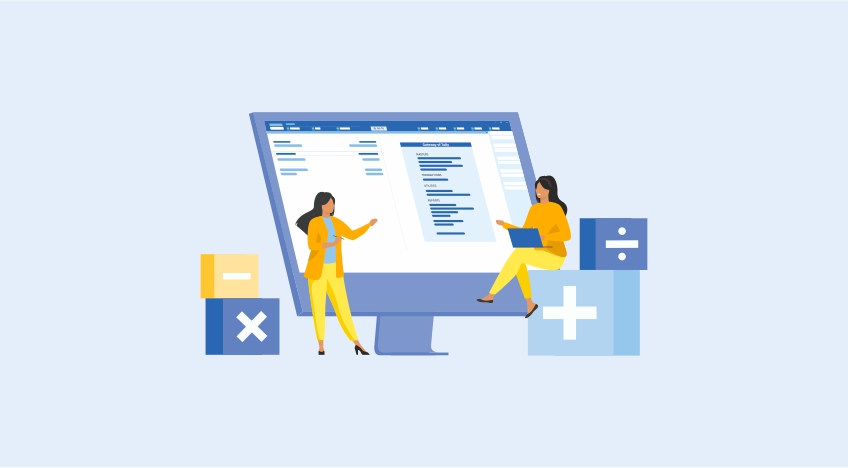- What is resource management?
- What are the resources in planning and management?
- What are resource planning techniques?
- What are the resource planning process stages?
- What are the tools used in the planning phase?
- How does TallyPrime help with resource management?
Projects need resources to be completed successfully. This makes resource management an essential part of project management. Resources management techniques and tools make the process of resource allocation and management easier than ever. Resource planning is an underlying factor in a successful project, and it determines the project's quality, timeliness, efficiency, and management. Using tried and tested techniques are essential to handle resources well. Software tools give easy and quick insights into resource metrics and reports so that a project manager can save time and make informed decisions. Instead of paper and spreadsheets, resource management with software is quick, accurate, and efficient.
|
Impact Of Automation on Accounting & Business Software Industry |
What is resource management?
Projects need human resources, tools, equipment, raw materials, time, and other supplies. Resource planning is the process of identifying, listing, organizing, and managing the resources of a project. Money can also be a necessary resource required to fund a project. Good resource management manages the resources to execute a project on time and within the budget. A resource manager will list the precise quantities of the required resources. These resources can be of two types; those that can be stored (materials and cash) and those that cannot be stored (such as human resources and time). Keeping these resources aligned with the project timeline and requirements is essential. Project managers are often in charge of resource management as well. Resource allocation may be planned in advance but the process of resource management is ongoing and must be in line with the project requirements and stages of completion. So, regular tracking and monitoring are essential to managing resources properly and efficiently.
What are the resources in planning and management?
The most commonly used resources can be categorized into six types:
Human resources: The people who work on a project are often the most important resources to be managed. They may be part-time or full-time workers, and their skills and time availability will also be matched to the project's needs.
Tools and equipment: The items used to execute the project, but that are not a part of the project fall in this category. This could be a concrete mixer for a construction project, and for a garment project, it could be a sewing machine. Software also falls into this category.
Materials and supplies: The resources that are used and consumed during the project execution, such as cement, fuel, cloth, thread, etc..
Money: The cost of executing a project is a vital resource that should be managed to stay within budget. Costs include wages, service fees, purchases, interest on loans, etc.
Facilities: A meeting room, warehouse, or construction site are facilities that may be required for a project.
Time: Though last on the list, time is the main factor around which the other resources are planned.
What are resource planning techniques?
Some of the techniques of resource planning are:
Resource forecasting: Project management requires that the project scope be defined and that the project be broken up into tasks. A project manager should be able to accurately estimate the resource requirements for each task in the project and the required timeline.
Resource allocation: This technique evaluates the available capacity, resources, and schedule. The resources are allocated to each task, and if there are insufficient resources, arrangements have to be made to obtain them when required. If more human resources are needed, the right people with the right skillset must be identified and roped in.
Resource leveling: A good project manager studies the skill set of all the team members and assigns suitable tasks to them. When a person’s abilities match the assigned task, there is optimal use of the human resources.
Resource utilization: Once the project goes from the drawing board to execution, tracking and managing the resources becomes vital. The ongoing work should use the allocated resources optimally and efficiently. Resources can be reallocated or changed as per the evolving demands of the project.
Resource visibility: Charts, reports, and other tools help a resource manager visualize the distribution and utilization of resources in the project. Using tools that help the manager visualize the status of resources in real-time is essential for efficient and accurate management.
Bottom-up estimates: Sometimes, looking at the smaller components of the project helps better estimate the required time and resources.
Resource leveling and smoothing: Resource leveling adjusts a project's starting and end dates according to the available resources. Resource smoothing adjusts the tasks and activities according to the resources.
What are the resource planning process stages?
The stages of resource planning can be broadly divided into four, and these stages comprise the resource lifecycle.
Determine required resources: Once you have a project, the required resources must be identified and listed. The resource requirements should match the time and other goals of the project while also keeping the costs minimal. Some of the common resources for a project are human resources, time, supplies, equipment, etc.
Resource procurement: A team of people needs to be put together to execute the project. If necessary, human resources with the necessary skills and experience must be hired. Contractors and suppliers for the required services and materials should be negotiated with and secured. The entire procurement should be executed within the timelines and budget. If there is any change in a resource schedule, the project’s processes should be adjusted accordingly.
Manage resources: The roles and responsibilities of all the people in the team including contractors must be clearly defined. The equipment and materials should be delivered on time and rented equipment should also be returned on time and in good condition. Any issues, delays, and doubts should be resolved and managed.
Resource control: The control of project resources is distinct from resource management. The allocated people and other resources must achieve the desired results. Maximum utilization of all resources is the goal of a resource manager. This is a continual process to keep the project on track.
These four stages of resource planning are cyclical. They sometimes repeat until the project is successfully completed.
What are the tools used in the planning phase?
The tools that are used by resource managers help them apply the resource management techniques and stages of resource planning effectively.
Resource management plan: This is the plan created for the resources early in the resource management cycle. This resource planning tool has all the vital details of timelines, project specifications, resource lists, and resource allocation. The entire resource management process revolves around this basic plan, and it can be tweaked as the project progresses. The plan should cover every small detail that is required to avoid overlooking some important equipment or material that is needed. Financial management of resources is one of the primary aspects of resource management.
Resources Breakdown Structure (RBS): The ordered list of the components of the resource plan forms the RBS. It should detail all the people involved and all the resources that money is spent on. An RBS is not a task breakdown but rather a resource breakdown.
Responsibility Assignment Matrix (RAM): This document defines the roles and tasks that each person is responsible for. It also sets out who each person reports to regarding their tasks. Some RAMs use the RACI method where R stands for Responsible, A for Accountable, C for consulted, and I for Informed.
Resources histogram: This is a visual resource planning tool that helps all members of the team get an overview of the entire resource allocation. This overview also helps identify over or under allocation of resources to certain tasks in comparison to others.
How does TallyPrime help with resource management?
Resource management is difficult to perform manually. It would be paper-heavy and lack real-time data. TallyPrime makes reporting, graph generation, and the other analytical processes of resource management accurate, quick, and real-time. This offers the following advantages:
- Less stress and better resource planning and management
- More accuracy, visibility, and transparency
- Projects completed on time and on budget
- Data based resource management
- Detailed high-level reporting
So, take the stress out of resource management and enjoy nurturing your projects to completion with TallyPrime.
Read More:










